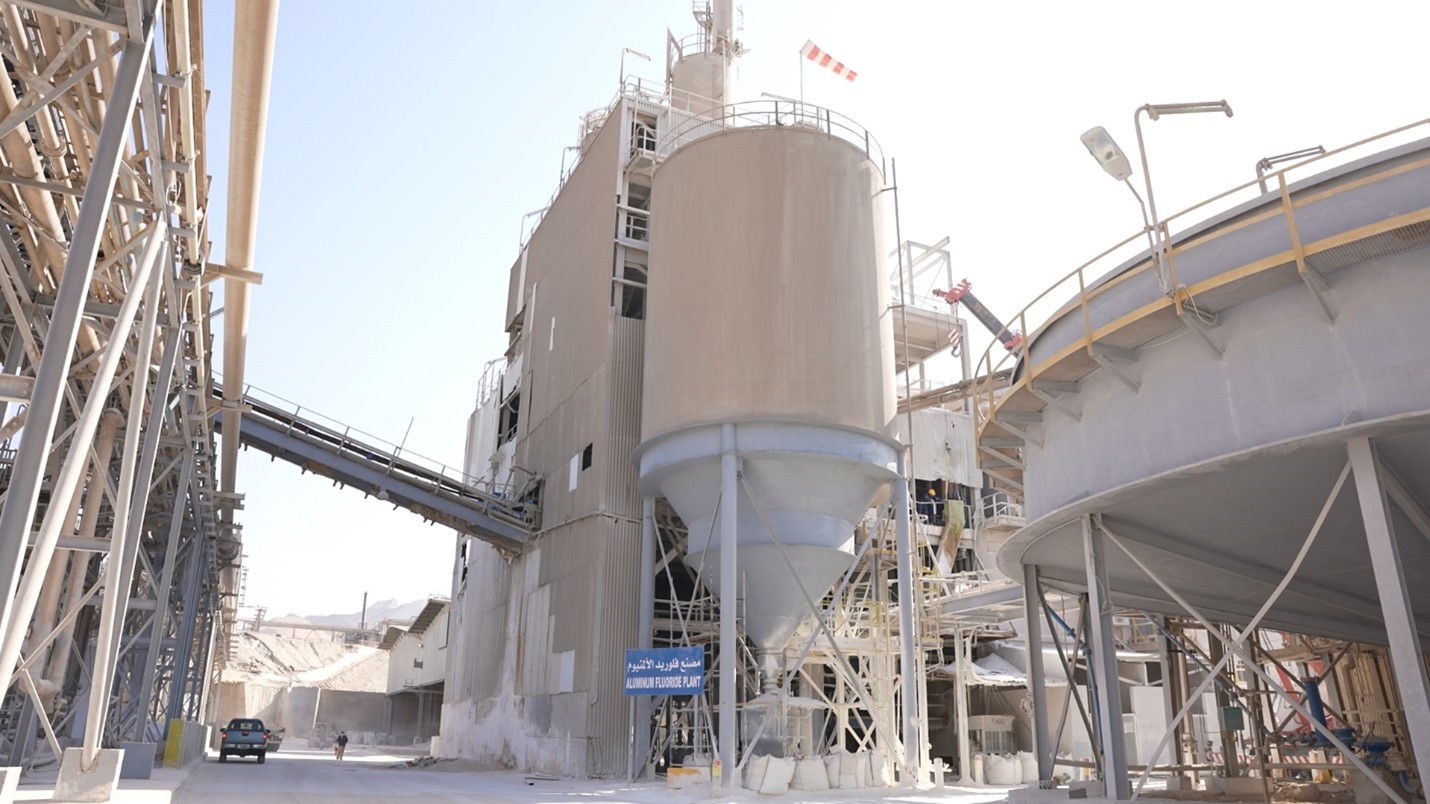Production Units
The production units within the industrial complex are considered fundamental pillars of the company's operations, where phosphate ores are transformed into high-value-added products. These units are distinguished by the application of the latest technologies to ensure production efficiency, while fully adhering to safety standards and environmental quality regulations.

The Public Utilities Unit:
This unit delivers the services needed to operate the production unit including electricity, steam of all types (high, medium and low pressure). It also provides water of all types (industrial, desalinated, cooling water, potable water, and fire fighting water) as well as air of both types (industrial and Aire for precision machines). There are special specifications for each of the above mentioned types.
|
|
Two Units for Fertilizer Production: It produces diammonium phosphate fertilizer with a production capacity of 1,250 tons per unit per day ; a total of 2,500 tons per day. The produced fertilizer contains 18% ammonia and 46% phosphorus pentoxide distinguished for its form of granules and easy to dissolve. As such, the plants and crops can easily benefit from it as it can be used via agricultural machines for all crops and trees whether in rain-fed or irrigated areas. Arab and foreign countries import ammonia using vessels by pumping it via a 14-inch diameter pipeline to two tanks- the first with a capacity of 30,000 tons and the second with a capacity of 10,000 tons. It maintains the ammonia temperature inside the tanks at 33 Celsius degree below zero and one atmospheric pressure.
|
|
Phosphoric Acid Unit: The Unit produces 1000 tons of phosphoric acid per day. The phosphoric acid is produced as a result of reaction of rock phosphate to sulfuric acid. Diluted phosphoric acid is produced at 28% concentration in the first phase and gypsum is a by-product; it is piled in the gypsum stacking area. Then, the phosphoric acid concentration is raised to 52% concentration accompanied with a by-product known as phyllo salicylic acid which is a raw material used in the production of aluminum fluoride. Jordan Phosphate Mines Company has devised a plan to revamp the phosphoric acid plant to achieve a daily production capacity of 1300 tons in order to fulfill the needs of the fertilizer plant and produce the merchant grade of phosphoric acid. |
|
|
|
Two Sulfuric Acid Units: Sulfuric acid is produced in two units at 98.5% concentration with a design capacity of 2500 tons/day/unit. The acid is produced from sulfur imported from neighboring Arab countries including Saudi Arabia, the United Arab Emirates (UAE), and Kuwait. It is stored in a depot of 35000 ton capacity and a storage yard outside the Complex with an approximate capacity of 100,000 tons. Sulfuric acid is a very strong and highly reactive acid; it is used in a range industries and 70% of the whole sulfuric acid globally produced is consumed in fertilizer manufacturing. The sulfuric acid is produced at 98.5% concentration in the production units at the Industrial Complex via burning the sulfur and transforming it to sulfur trioxide gas and then sulfuric acid. The sulfuric acid production process is accompanied by the production of quantities of high-pressure steam, which contributes to meeting the needs of other plants for steam and generating electric power.
|
|
Aluminum Fluoride Unit ( AlF3): Aluminum fluoride is a catalyst used in manufacturing aluminum from its ores and it reduces the melting point of bauxite ore during the production process of aluminum. The aluminum fluoride plant was established as an environmental requirement to deal with the fluosilicate acid product, which is a by-product of the concentrated phosphoric acid industry, in order to neutralize its environmental effects and convert it into a commercial product. Flu salicylic acid reacts with aluminum hydroxide, producing commercial aluminum fluoride. |
|



